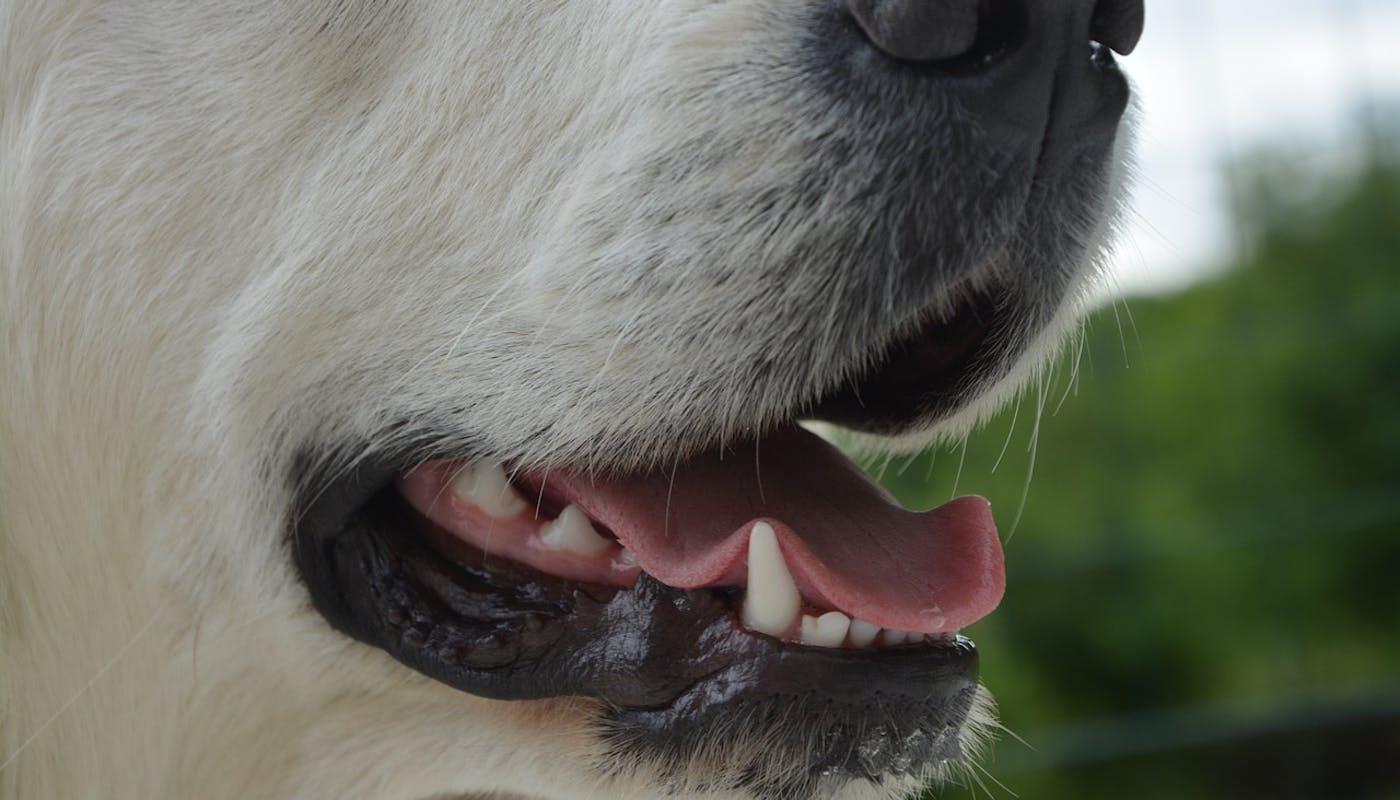Periodontal Disease in Dogs: Symptoms, Causes and Treatments
It’s one of the most common diseases affecting our dogs. But periodontal disease is preventable – and usually treatable if it’s caught early.
What Is Periodontal Disease in Dogs?
Periodontal (or gum) disease is caused by bacteria inside the mouth. Because these bacteria lurk in the gums, they’re not always detected until the disease has progressed.
Periodontal disease starts with inflamed gums which might bleed when they’re brushed. You might notice that your dog’s breath smells strange. If untreated, gum disease causes the gumline to recede, affecting the teeth. After this, the teeth can become loose and the jawbone suffers some deterioration. By this point, your dog’s likely to be in pain and the affected teeth will have to be removed.
Advanced periodontal disease can go on to cause abscesses, fractured jaws and oral cancer. Because it is an infection in the blood, periodontal disease can even increase the risk of kidney, liver, and heart disease.
But why is periodontal disease so common in dogs?
Well, plaque builds up on our dogs’ teeth just like it does on ours. If left on the surface of the tooth, plaque hardens and becomes difficult to remove. This causes gum disease which can spread into the jaw. Periodontal disease is more common in dogs who:
- Do not have their teeth brushed daily
- Have reached their senior years
- Are small breeds (because toy breeds have small heads with crowded jawlines)
- Are brachycephalic breeds/learn/dog-lifestyle/brachycephalic-dog-breeds-what-owners-need-to-know, or
- Are more likely to damage teeth due to chewing.
What Does Periodontal Disease Look Like in Dogs?
One of the symptoms that owners notice first is bad breath. If your dog’s breath is consistently smelling bad (and not just because they ate a poop on their walk/learn/dog-health/treating-coprophagia-in-your-dog), it’s important to get their dental health checked.
If the disease has progressed, you might see that parts of the dog’s gums are inflamed or have receded. When you brush their teeth, you might notice some blood on the brush.
Dogs are good at hiding pain, but they will probably give you some clues that their teeth are hurting. These could include reluctance to chew, loss of appetite, or general grouchiness. They won’t want you to touch or examine their mouth.
In the advanced stages of periodontal disease, dogs can suffer from loose teeth (which might fall out) or visible infections at the root of the tooth.
How to Treat Periodontal Disease in Dogs
Each time your dog attends the vet for their boosters, you should request a dental check-up. Your dog might benefit from a professional dental clean (especially if they’re a breed prone to periodontal disease) – this is carried out under anesthesia. They’ll have their teeth scaled and hardened plaque removed. If the disease is in the early stages, this treatment should be successful.
If there is an infection, your vet will likely prescribe a topical antibiotic to clear it up. But if the disease is very advanced, tooth extraction might be the only solution.
It is not possible to treat periodontal disease at home. But it is possible (and strongly advised) to look after your dog’s teeth and prevent gum disease from returning. Here’s how:
How to Prevent Periodontal Disease in Dogs
Just like human gum disease, canine periodontal disease is preventable with good dental hygiene. Does your dog have a toothbrush?
Most dog owners are unaware of the importance of brushing, but awareness is spreading. Experts recommend brushing your dogs’ teeth every day. If you don’t already, you’re not alone… let’s try to improve this together!
How To Brush Your Dog’s Teeth…
Because our dogs aren’t used to having a brush shoved into their mouth, they’re unlikely to let us go in and scrub. Desensitization training can help. This means keeping your expectations (and stress levels) low, and your brushing-time even lower.
First, wash your hands, and get some canine toothpaste (human toothpaste isn’t suitable, most contain xylitol which is toxic to dogs). Start with 20-30 seconds (if possible) of brushing, accompanied of course with plenty of praise and affection. Then build up the brushing, day by day, as your dog gets used to the idea. You can use specially designed dog toothbrushes similar to the ones we use on our own teeth. You can also buy rubber finger toothbrushes. Finger toothbrushes don’t have the same bristle depth as a regular toothbrush but they do let you have more control and let you feel just how much pressure you’re applying (assuming you and your dog are comfortable having your fingers between their teeth).
If your dog is steadily resistant, you have options. Try a dental additive in their water bowl, and a daily dental chew which they can use to “brush” by themselves.
Further Reading…
Why do dogs like to chew/learn/dog-lifestyle/why-do-dogs-like-to-chew – and should they do it? Try some alternatives to rawhide/learn/dog-health/is-rawhide-bad-for-dogs. If your dog has sensitive teeth, learn what could be causing it/learn/dog-health/can-dogs-have-sensitive-teeth. And just in case you’ve ever wondered… is your dog’s mouth cleaner than yours?/learn/dog-health/are-dogs-mouths-cleaner-than-human-mouths
